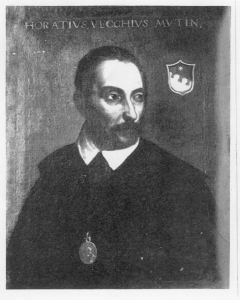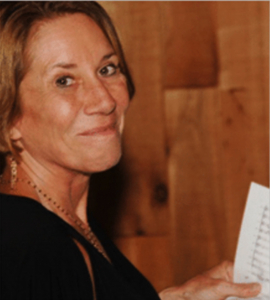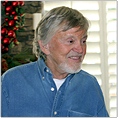The Suggested Repertoire from Around the World for Developing Bands series is a new WASBE program of instructional materials to assist music directors in identifying exceptional works from around the world that are playable by developing musicians. Each of the selections in this series provide a myriad of musical elements that might be explored and developed within the rehearsal context, but the goal is to present music of artistic merit that aligns most directly to the composer’s unique voice. These are selections that stand out from works written largely for teaching purposes.
Our installments will include four-five such works, each to be contributed by WASBE members from throughout the world. While this initial offering includes composers from the United States, there will be many exceptional and diverse works to follow in the coming months. In turn, some of the selections will be well-known while others will be quite unfamiliar to most – and there will be more than a few older compositions that we hope will be revisited, reacquainted, or discovered anew.
This first installment (February 2023) is submitted by James Ripley, Immediate Past President of WASBE and Director of Instrumental Music Activities at Carthage College in Kenosha, Wisconsin (USA).
Grade 1
Whirlwind – Jodie Blackshaw (Australia)

https://www.youtube.com/watch?v=y0xLGyD2pY0
Jodie Blackshaw has been an extraordinary proponent of opening the pathway for performers to think musically, and more creatively, in her compositions. Based on a simple melody in A minor (so performers are aware from the outset of the placement of sharps and flats, and that keyboard percussionists find notes “naturally”) the intent is to allow players to develop their musical sensitivity and listening skills in both metered and unmetered sections. Solo options are indicated for all players. The use of “whirlies” and “waterglass chimes” brings a special timbre to the work. All of these characteristics abound in Jodie’s other works, and are indicative of her best artistic endeavors.
Grade 1+
Fa Una Canzona – Orazio Vecchi (Italy), arranged by Larry Daehn

https://www.youtube.com/watch?v=4_NjmZm-k8s
https://www.youtube.com/watch?v=O7D7jDrIi8k
This marvelous work was written as a four-voice secular madrigal by the Italian master Vecchi in the late 16th century. Both the charm and musical opportunity lies in the varied meters, which when played up to tempo, introduce young players to how asymmetric meters work and are felt. The orchestration used by Larry Daehn simulates Renaissance consorts in the alternation of woodwind, brass, and percussion families, as well as tutti passages. The introduction incorporates hand clapping to establish the rhythmic motive, as well as create a celebratory flourish. Conductors would be advised to utilize this practice throughout the piece (on players’ written rhythms) when working to increase the tempo to facilitate the understanding of alla breve and groupings of measures to create asymmetric patterns.
Grade 2
The Red Balloon – Anne McGinty (USA)

https://www.youtube.com/watch?v=cJBF3IZLwCc
One of the most prolific composers for young band in the United States, Anne McGinty composed The Red Balloon in 1993 as a study in sound based on a painting largely in white but with a floating red balloon. This programmatic element is enhanced by the use of the Lydian mode, which is written not only in the opening key of C, but also in G, Db, Ab, and F! The composer also scores the melody for all instruments in the ensemble, a rarity in music for young musicians. The tonal and instrumental couplings give a special character to each section, creating interesting re-settings of the tune. Percussion are given a highly colorful role to enhance the varied settings.
Grade 3
3 O’Clock Mix – Jonathan Newman (USA)

https://www.youtube.com/watch?v=eKYhAL9grN8
Written in 2012 on a commission organized by the Bowling Green University National Band Association Student Chapter, and including school bands from the Wisconsin, Ohio and Michigan, this four minute work denies any easy description, but might fall under the category of a “program piece.” It exemplifies all the compositional craftsmanship and character of the composer’s more advanced works, but within a very accessible technical level.
There are 10 flexibly arranged parts, ranging in tessitura from High (parts 1-4) Middle (parts 5-7) and Low (parts 8-10). Percussion parts are provided for 2 sets of “Ringers” (resonant pitched), 2 sets of “Pulse” (dry/secco pitched), and 4 percussionists playing on Desk, Chair, Book/Chalkboard, and Bass Drum/Tam-Tam/Eraser.
The program, or scenario, that propels the musical concept is that at the end of the school day (3 O’Clock in this case) the students begin to explore musical sounds on the “found objects” in the classroom. This then leads to others in the class that begin to explore musical motives on their instruments, building on the sounds that are heard around them. This kind of written out “MIX” is all quite naturally developed within the piece, but one of the exciting opportunities with this work is that the players could be invited to make up some of their own motives so as to take the piece in a new direction. Another, quite natural, adaptation could come from extending the time of some of the early developmental sections so as to make the work seem more improvisatory rather than in standard four-bar phrases. Some theatrical elements (such as the slamming shut of a textbook three times at the end of the piece) seem completely natural, but other things like drawing lines and dots on a chalkboard will need some thought so as to make sure what is seen/written makes sense. The piece certainly works as written, however.
This building of the two intervals can be related as the simple melodic invention of the students as they begin to “improvise” at the end of the school day. All of these fundamental elements (sustained tones, scales, intervallic relationships, repeated eighth notes in differing styles) can be rehearsed with the percussionists rehearsing areas of the background “grooves” at the same time. None of the grooves are particularly loud (except from “H” to “I”) and will provide time support and interesting character to the fundamental exercises in the winds.
All of these special elements, and the ingenious craftsmanship of the composer to combine basic music fundamentals in an interesting and inventive manner makes 3 O’Clock Mix a mini-masterpiece for young players. In the right context, it would also provide a delightful program piece for advanced bands as well.
Grade 3+
Courtly Airs and Dances – Ronald Nelson (USA)

https://www.youtube.com/watch?v=FiAQ4CHS0Yc
One of the most acclaimed contemporary American composers, Ronald Nelson, has written in a post-modern sensibility even when producing some of his most austere compositions. Courtly Airs and Dances was written for Cheryl Floyd’s Middle School Band in Austin, Texas in 1995–immediately following Resonances I, Passacaglia (Homage on B-A-C-H) and Chaconne (In Memoriam…). Since then, it has become one of the standard works for bands in the US, and around the world, to perform on a regular basis. As it approaches its 30 (!) year anniversary, there are few works to match it in regards to its beauty, power, elegance, and uplifting character—regardless of difficulty level. Two of the movements hearken back to Nelson’s 1956 opera, The Birthday of the Infanta, including the “Sarabande” similar to several included in the opera and the “Saltarello” which was lifted directly from the operatic score for the fourth movement.
While distinctly in the composer’s voice, each of the movements pay homage to European Renaissance models (France, England, Italy, Spain, and Germany). The six movements each provide excellent teaching opportunities, including: tuning of open intervals which gradually become fully formed triads (Intrada), 3/2 time with easily perceived counterpoint (Basse Danse), timbral blending and tremolos (Pavane), Renaissance-style percussion & timbre replication (Saltarello), lyricism connecting instrumental playing with singing (Sarabande), and imitative counterpoint with tempo discrimination (Allemande).
Close to twelve minutes in duration, the composer also states that individual movements or sets of any number might be extracted for occasional use.


